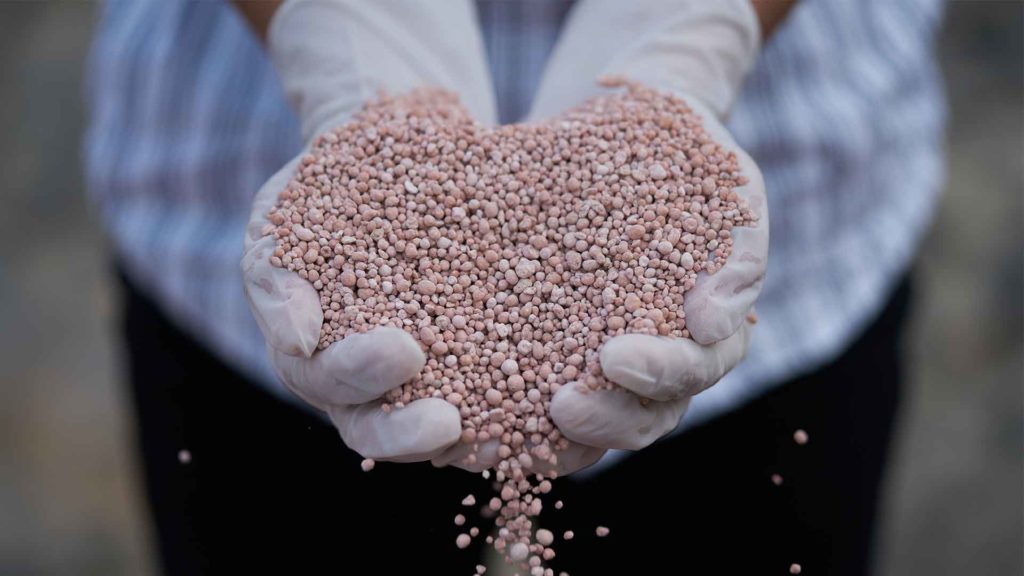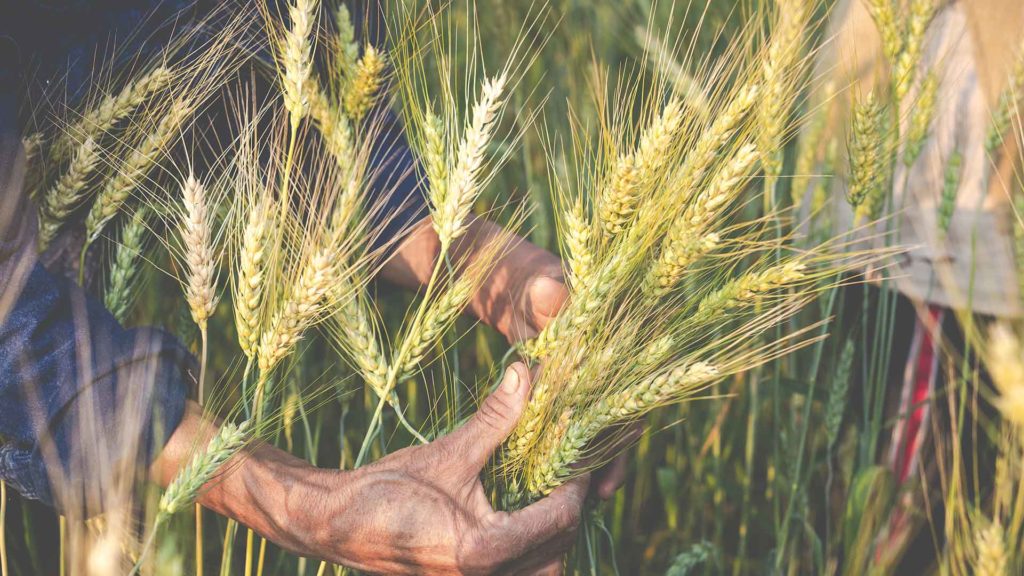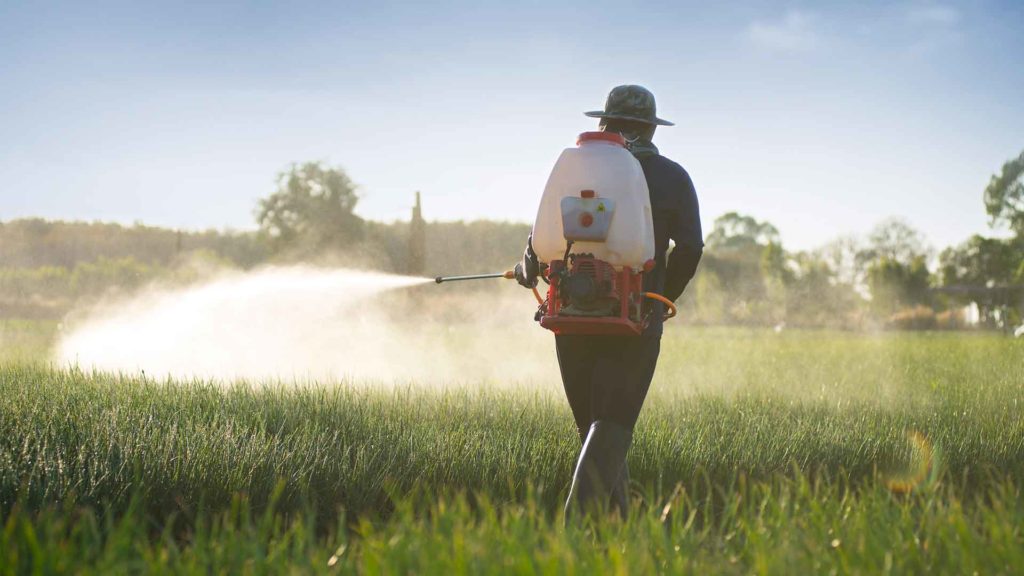Boron in Agriculture
Boron in Agriculture is a mineral element necessary for plant growth and development, and is essential for agricultural soil. It is one of those minerals that most people know little about. However, you can find it everywhere in nature, from soil composition to groundwater supplies. It’s also in fertilizers because plants need it too. Borax is one of the most common boron-containing compounds that can be used as a fertilizer. It helps the plants to grow and produce fruits and vegetables by aiding in photosynthesis, cell division, and protein synthesis. The importance of Boron in plants cannot be neglected and is vital to prevent infections like Ergot fungal (see below).

Boron for Crops
Many farmers are using less Boron than they think. The limited usage is primarily due to misinformation about the benefits and origins of boron. As a result, some crops are not getting enough boron for them to thrive properly. Farmers who have begun supplementing their soil with boron have seen an increase in productivity as well as decreased costs on seeds and other agricultural products.

It is a mineral that plays an essential role in plant growth. Boron makes up less than one part per million of the earth’s crust, and as such, it is considered rare. In agriculture, boron fertilizers are used to increase crop yield and quality as well as soil fertility. The element has a positive effect on the health of plants’ leaves by inhibiting fungi or bacteria from attaching themselves. Without adequate amounts of boron, crops may suffer from stunted root development, decreased fruit production, and increased susceptibility to pests and disease.
Boron – wonder mineral
Over time, soils can lose much of their original richness due to erosion or improper agricultural practices. Therefore, it becomes crucial for these soils to be refreshed with Boron. Borax is the most common form of boron used in agriculture and can be made from mined deposits. Or, it is also found naturally occurring in saline lakes, dry lake bottoms, volcanic rock, seawater, underground brine water reservoirs, and hot springs. Borax has no colour but contains a high percentage of boric acid, providing the full benefits one needs for agricultural purposes.
Boron is a micronutrient that most plants require for healthy growth. It helps plants by improving their root system, which increases their ability to absorb water and nutrients from the soil. For this reason, boron enhances crop yields in certain areas where soils are low in boron content. There are various ways of delivering boron to plants, including foliar sprays or through irrigation systems. The best way to determine if your crops have enough boron is by testing them. Boron deficiencies are relatively easy to spot as plants suffering from this condition have poorly developed root systems and often wilt during hot weather or after heavy rain.
Boron Deficiency in Crops

The most common Boron deficiency is evident on the older leaves of plants, which will begin turning yellow between leaf veins. They expose a banded appearance similar to that caused by zinc deficiency. Boron-deficient areas usually occur near growing tips, thus affecting overall plant growth with severely affected roots. Hence, the plants cannot absorb water and move into wilting episodes, especially under hot conditions. It is followed by disease attacks, particularly around the crown area, causing rotting death of crops if not detected early enough. It is essential to take necessary and corrective actions immediately before any further damage.
We can correct the Boron deficiency in crops by either applying borax or other organic materials. It is recommended to use high in Boron content such as cottonseed meal, dry molasses, alfalfa meal, and coffee grounds to the soil. Additionally, you can also fertilize the plants while at the same time rinsing with Borate solutions for Boron uptake through roots.
Overcoming Seed Failure
Boron is essential for plants to grow and produce healthy fruits. The deficiencies can lead to seed failure in many plant species, including strawberries, peppers, tomatoes, and apples. The boron content of soil varies greatly depending on the area of the country. For example, soils in arid regions are often high in boron, while those in wetter regions may not have enough boron for optimal growth.
Boron deficiency can fail to set seed, which can lead to a decrease in crop yield. For this reason, agriculturalists and farmers need to know the symptoms of boron deficiency. These include stunted growth, decreased fruit quality and quantity, malformed or cracked seeds with only one embryo inside them, and deformed leaves.
The majority of these symptoms mimic those of other common plant deficiencies and those caused by environmental stressors such as drought or frost damage—however, some differences between the two. Boron deficient plants will have rough-looking bark, while those suffering from other causes will not change their appearance due to dinghy staying smooth after time passes. Additionally, boron deficient plants will show yellowing of their leaves while other reasons lead to browning. Boron deficiency in plants is most often found on the upper side of plant foliage. It is evident closest to the sun, with lower portions remaining green. However, it differs from nutrient deficiencies or environmental stressors that show yellowing across plant parts evenly.
Boron deficiency can fail to set seed, but this is easily fixed with a borax solution. Borax contains boric acid and has been used for centuries as an insecticide and fungicide. It is also great for plants because it helps them grow stronger roots by improving water flow through their tissues.
Ergot infection
The Ergot Fungus
Ergot is a fungus on various grains and grasses, including wheat, rye, barley, and oats. It causes the production of alkaloids which leads to convulsions in animals as well as humans. Boron deficiencies may be due to a variety of reasons, such as weather conditions or soil quality. A boron deficiency may also occur if there is an excess amount of nitrogen in the plant’s environment because it will compete with the uptake of boron by plants. The symptoms most often associated with this type of deficiency include stunted growth and leaf curling (often referred to as “curl rot”).
A few years ago, a significant ergot infection of sorghum crops triggered an international trade ban on U.S. exports of corn and wheat products. It was banned due to the fear that the contamination may have spread to those crops as well. Ergot is a naturally occurring fungus that can affect cereal grains such as barley, oats, rye, and wheat. But it’s most likely to occur in rye grain because it produces more ergot than other cereal grains.
The most common symptoms include rotted or blackened kernels near the ear tip and sprouting inside ears with whiteheads. It also leads to clumps of dark-colored fungal growth at stalk or ear base and stunted plants with shortened internodes (distance between nodes) and reduced leaf size. Left untreated, these infected plants will eventually die.

Two simple steps can prevent Ergot infection in plants. First, make sure that the seed is not infected before planting it. Second, keep your garden free of any sources of ergot fungus spores by using Boron on the soil and spraying foliage to prevent them from spreading.
Boron deficiency can lead to ergot infection in plants. Ergot infections, which are especially prone to appear on wheat plants, typically happen when they grow under excellent conditions with little nitrogen fertilizer and irrigation availability. Boron deficiency can also lead to ergot infections because the fungus feeds on the plant’s vascular system, which also happens when boron is only present in limited quantities in crop soil. Therefore, Boron is an essential nutrient for plant growth and health. It aids the formation of nucleic acids, cell membranes, and other cellular components. Without boron, plants cannot fight off infections like ergot infection, which can be fatal if left untreated.
Plants with a lack of boron often have brittle stems or leaves that easily break apart. They have swollen leaf petioles, stunted root systems, reduced fruit size and yield, and delayed maturity rates. Additionally, deficient plants have underdeveloped buds on flowering plants (especially roses), leading to sparse blooms or even no flowers at all. Symptoms may appear gradually or suddenly depending on the severity of the Boron deficiency. Boron deficiencies can show similarly to nitrogen and calcium deficiencies, often with fewer flowers on the plant or none at all. But Borax is an effective solution that can be added directly to soil for Boron uptake by plants through their roots.
Boron’s Micronutrient Properties
Boron is a nutrient that can be found in many different types of plants. And for farmers who care for the well-being of their green friends, it is essential to know how to prevent Boron deficiency. A healthy plant will have a higher level of boron than one with poor growth or wilting leaves. There are two ways you can check if your plants have enough boron: The first way is to conduct a Boron test, and the second is by examining your plant’s roots. Boron deficiency in crops is an issue that affects many farmers around the world. This wonder mineral plays a vital role in plant growth and development, and without it, the crop will suffer. Boron deficiency can cause failure to set seed and ergot infection, leading to other issues such as reduced yields or death of the plant. As boron is found naturally in the soil, deficiencies are usually present with over-farming or heavy herbicides for weed control. By adding borax (sodium tetraborate) to the soil before planting, sufficient quantities of the mineral can be guaranteed.





